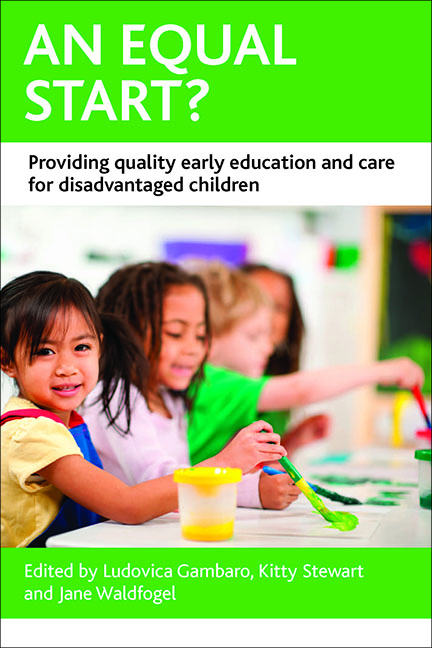Book contents
- Frontmatter
- Contents
- List of figures, tables and appendices
- Acknowledgements
- Notes on contributors
- one Introduction
- two Equal access to early childhood education and care? The case of the UK
- three Towards universal quality early childhood education and care: The Norwegian model
- four Equal access to quality care: Lessons from France on providing high-quality and affordable early childhood education and care
- five Equal access to high-quality childcare in the Netherlands
- six Access and quality issues in early childhood education and care: The case of Germany
- seven New Zealand: A narrative of shifting policy directions for early childhood education and care
- eight Early education and care in Australia: Equity in a mixed market-based system?
- nine Delivering high-quality early childhood education and care to low-income children: How well is the US doing?
- ten Common challenges, lessons for policy
- Index
five - Equal access to high-quality childcare in the Netherlands
Published online by Cambridge University Press: 03 February 2022
- Frontmatter
- Contents
- List of figures, tables and appendices
- Acknowledgements
- Notes on contributors
- one Introduction
- two Equal access to early childhood education and care? The case of the UK
- three Towards universal quality early childhood education and care: The Norwegian model
- four Equal access to quality care: Lessons from France on providing high-quality and affordable early childhood education and care
- five Equal access to high-quality childcare in the Netherlands
- six Access and quality issues in early childhood education and care: The case of Germany
- seven New Zealand: A narrative of shifting policy directions for early childhood education and care
- eight Early education and care in Australia: Equity in a mixed market-based system?
- nine Delivering high-quality early childhood education and care to low-income children: How well is the US doing?
- ten Common challenges, lessons for policy
- Index
Summary
Introduction
The Dutch early childhood education and care (ECEC) system is essentially a two-tiered system, consisting of private day-care centres and publicly funded playgroups. Day-care centres provide care for young children whose parents are employed. Although almost all parents make use of these facilities on a part-time basis, the services may be offered up to 11 hours a day, five days a week and 50 weeks a year. Playgroups are more child-centred, focus only on children in the age category two to four and cover about 10 hours a week and 42 weeks per year. Because of the difference in focus, children attending playgroups tend to be more from lower-income families and from a minority background. In addition, specific programmes for disadvantaged children are often organised within the context of playgroups. This concerns the so-called VVE programmes, focusing on early childhood education and care. The programmes might cover approximately 15 hours a week, equivalent to about three or four mornings or afternoons.
Research seems to indicate that children benefit from the use of high-quality childcare, while low-quality care can have a negative effect on development (NICHD Early Child Care Research Network, 2006). Until now, however, there has been little information on the use of high-quality care in the Netherlands and the difference between households in that respect. High-quality childcare may not be available in low-income neighbourhoods, for example, or parents may lack the information to opt for the highest quality. There may also be systematic differences between the quality of childcare services and playgroups – and if playgroups score low on quality, this may have negative consequences for children of low socio-economic status.
In this chapter, we investigate the state of equality of access for high-quality care in the Netherlands for families of low socio-economic status and different cultural backgrounds. The results can have implications for whether the two-tiered Dutch childcare system with both private day-care centres and publicly funded playgroups is able to provide equal quality care across socio-economic and ethnic groups. For our analysis, the first wave of the Pre-COOL dataset was used, collected in 2010 and 2011. The dataset includes indicators on structural and process quality in both day-care centres and playgroups, data on children's development and socio-economic characteristics of the staff and parents.
- Type
- Chapter
- Information
- An Equal Start?Providing Quality Early Education and Care for Disadvantaged Children, pp. 101 - 120Publisher: Bristol University PressPrint publication year: 2014

